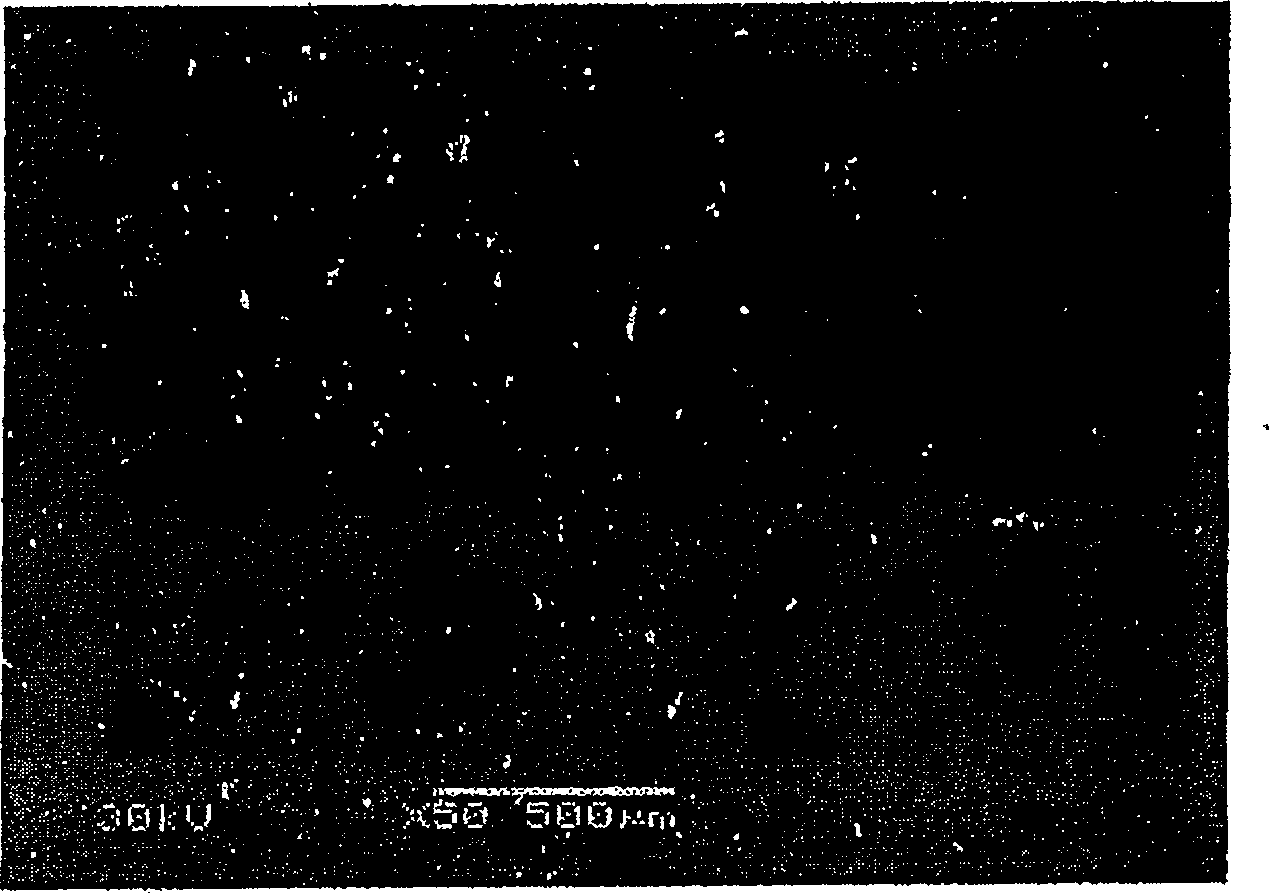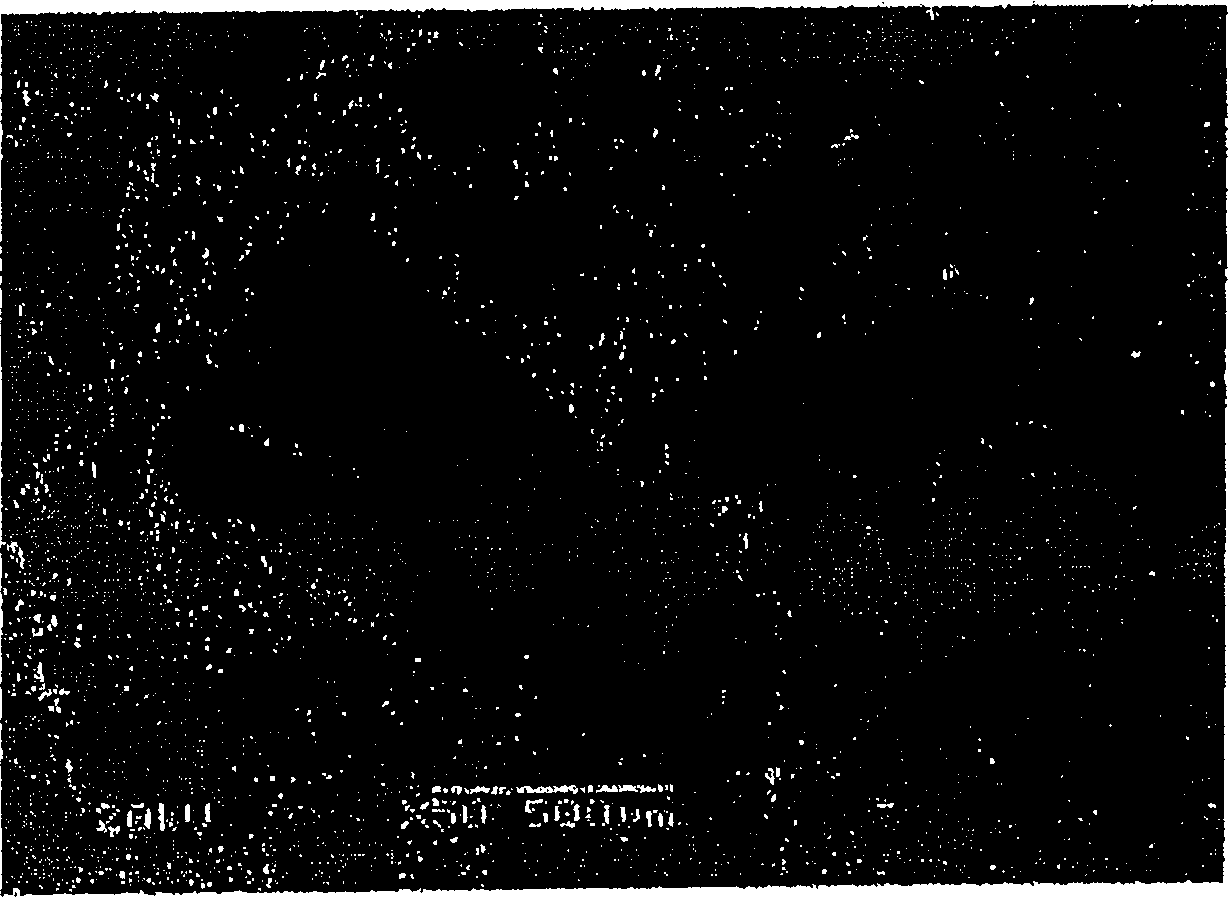Oxide-bonded silicon carbide material
A technology of silicon carbide and oxide, applied in lighting and heating equipment, furnace components, furnaces, etc., can solve the problems of insufficient creep resistance and thermal shock resistance, low strength, etc., to improve mass production and improve The effect of manufacturing large-scale products and reducing manufacturing costs
- Summary
- Abstract
- Description
- Claims
- Application Information
AI Technical Summary
Problems solved by technology
Method used
Image
Examples
Embodiment 1~8、 comparative example 1~3
[0044] SiC and SiO 2 Prepared to have the composition shown in Table 1 after firing, and at the same time add the additives shown in Table 1 in terms of oxides as 1% by mass as trace components, and further add a dispersion material (substance name: ammonium polycarboxylate), viscose Mixture (substance name: polyacrylic acid emulsion) and water, and 50 kg of the obtained mixture were mixed by a ball mill for 24 hours to obtain slurries, respectively. After degassing the obtained slurry for 30 minutes in a vacuum, molded bodies were respectively obtained by casting the slurry into a plaster mold. The obtained molded body was fired at 1400° C. in an air atmosphere to obtain a sintered body (dimensions: 400 mm×400 mm×10 mm) as an oxide-bonded silicon carbide material. The characteristics of the obtained sintered body (bulk specific gravity, flexural strength at room temperature and 1300°C, oxidation resistance at 1300°C, creep resistance, and thermal shock resistance temperature...
Embodiment 9~21、 comparative example 4~28
[0055] SiC, SiO with particles shown in Table 2 2 and V 2 o 5 Prepared to have the composition shown in Table 2 after firing, and then added a dispersion material (name of substance: ammonium polycarboxylate), binder (name of substance: polyacrylic acid emulsion) and water, and mixed 50 kg of the obtained mixture with a ball mill After 24 hours, mud was obtained respectively. After degassing the obtained slurry for 30 minutes in a vacuum, molded bodies were respectively obtained by casting the slurry into a plaster mold. The obtained molded body was fired at 1400° C. in an air atmosphere to obtain a sintered body (dimensions: 400 mm×400 mm×10 mm) as an oxide-bonded silicon carbide material. The characteristics of the obtained sintered body (bulk specific gravity, flexural strength at room temperature and 1300°C, oxidation resistance at 1300°C, creep resistance, and thermal shock resistance temperature) were measured, and the results are shown in Table 2. middle. Here, Exa...
Embodiment 2、 comparative example 29
[0060] The microstructure of the oxide-bonded silicon carbide material (sintered body) obtained in Example 2 was observed with a SEM (scanning electron microscope). show the result in figure 1 middle. On the other hand, in Comparative Example 29, the microstructure of an oxide-bonded silicon carbide material (sintered body) commercially available under the trade name "Catalon" from Nippon Barbisa Co., Ltd. was observed with a SEM (scanning electron microscope). show the result in figure 2 middle.
PUM
| Property | Measurement | Unit |
|---|---|---|
| bending strength | aaaaa | aaaaa |
| particle size | aaaaa | aaaaa |
| particle size | aaaaa | aaaaa |
Abstract
Description
Claims
Application Information
 Login to View More
Login to View More - R&D
- Intellectual Property
- Life Sciences
- Materials
- Tech Scout
- Unparalleled Data Quality
- Higher Quality Content
- 60% Fewer Hallucinations
Browse by: Latest US Patents, China's latest patents, Technical Efficacy Thesaurus, Application Domain, Technology Topic, Popular Technical Reports.
© 2025 PatSnap. All rights reserved.Legal|Privacy policy|Modern Slavery Act Transparency Statement|Sitemap|About US| Contact US: help@patsnap.com


